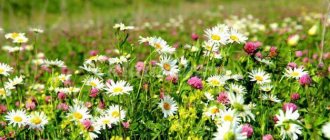Summary of a lesson on environmental education - Observing the wind
The teacher shows an illustration with a picture of the sea, waves, on it a boat with swollen sails, and reads a poem.
Summary of a lesson on environmental education
Topic: “Wind Watching”
Target:
— Consolidate knowledge about calm weather, windy weather, wind .
— Determine the direction of the wind from surrounding objects, a weather vane .
— The cold wind is north, the warm wind is south.
— Introduce the weather vane .
— Mark windy weather in the nature calendar .
Methodical techniques: Sensory perception, observation, comparison. wind today ... How to find out? Which direction is it blowing from? Strong or not, warm or cold? Determine the direction of the wind weather vane, according to the cardinal points. Is the wind colder than yesterday? Should it be marked in the nature calendar ?
Equipment: vane , weather calendar, surrounding objects.
Progress of observation
The teacher shows an illustration with an image of the sea, waves, on it a boat with swollen sails, and reads the poem:
“The wind is blowing across the sea And the boat is blowing, He is running in the waves On broken sails”
Then asks the children a question:
- Guys, why are there such swollen sails on the boat? Why is this happening? What helps the boat?
D. They are blown by the wind.
Q. Correct, what is the wind like here?
D. Strong.
B. Children, let’s all get dressed together and go outside and determine what kind of wind it is outside today (go outside).
Q. Do you guys know how to determine what the weather is like (windy or not) and from which direction the wind is blowing.
D. we don’t know.
V. So, you can tell by the weather vane.
What is a weather vane ?
The teacher shows the children a weather vane (a stick of spinners with the letters “S.Y.” on it. The teacher demonstrates with his hands how it spins).
Q. Guys, this thing is called a weather vane. They determine the direction of the wind. Let's all say this word together and remember (the children repeat after the teacher. They install a weather vane together with the teacher, determine that the wind is north).
Q. Guys, look at the turntables spinning. And from the letter we see that the wind is north.
V. Olya, how did we determine what kind of wind it is?
O. According to the weather vane.
V. Correct! And who can tell me what kind of wind it is, strong or not?
D. Strong.
Q. Guys, I think the following words fit this wind:
“Wind, you are a mighty wind, you drive flocks of clouds.”
Is it true ! Is a strong wind driving clouds across the sky?
D. Yes.
Q. Children, remember. When you walked into the garden yesterday morning, what was the wind like? Colder than today?
D. Yes.
B. Children, look how the trees sway in the wind. How do they swing?
D. Strongly. From side to side.
B. Correct. Is it possible to look out the window to determine whether there is wind outside or not?
D. It is possible.
Q. Maybe some of you know a poem or riddle about the wind? (children offer their options).
Q. Now let’s go to the garden and you can show me in your drawings how strong the wind is outside. And at the same time, you and I will mark the wind in the nature calendar (they come to the group, mark it in the calendar; then they sit down to draw).
See the thesis “ Environmental education of preschool children in the classroom and in everyday life ”
Summary of a targeted winter walk in the middle group of kindergarten
Summary of a targeted walk in the preschool educational institution “Winter Wind”
Goal: To form in children elementary ideas about the wind. Objectives: 1. Continue to acquaint children with seasonal changes in living and inanimate nature; 2. Teach children to observe phenomena and objects of living and inanimate nature; 3. To consolidate children’s knowledge about winter, about the winter features of nature; 4. To form in children elementary ideas about wind as a phenomenon of inanimate nature; 5. Develop children's thinking, imagination, observation, attention; 6. Develop dialogical speech in children; 7. Enrich and activate children's vocabulary; 8. Strengthen in children the ability to act in accordance with the text, hear, listen and remember artistic words; 9. Foster children’s interest in learning; 10. Cultivate in children an interest in natural phenomena and experimentation. Preliminary work: - Examination of illustrations about winter, the poster “Winter Forest”, “Trees in Winter Dress”; — Conversations: “What kind of wind is there?”, “What does the wind do”; — Experiments: “A breeze is blowing”, “Strong or light breeze”; — Didactic exercises: “Strong-weak”, “Light-heavy”; - Reading stories, fairy tales, poems about the wind; - Mobile and finger games. Equipment: Plumes, red ribbon. Progress of the walk: (The walk is carried out on the territory, playground, site of the kindergarten. Children stand near the trees in a semicircle) Educator: Guys, look how beautiful it is all around! Winter has completely taken over nature. There is white fluffy snow on the paths, trees, and roofs, which glistens and sparkles in the sun. Look, children, how interesting it is to watch snowflakes fall. Either they fall slowly, in soft flakes, or they are driven by the wind, and the snowflakes scatter in different directions. Reading the poem “In white velvet...” In white velvet there is a village, And fences and trees. And as the wind attacks, This velvet falls. Educator: What is it like, the wind? Conversation Questions for the conversation (expected answers from children): - Do you know what wind is?.. (Children) (This is the movement of air); — How can you create artificial wind? ... (You need to make the air move, for example: wave your hand, blow on each other, wave a fan, play with plumes); - Why is the wind called invisible?.. (The wind cannot be seen, it can only be felt); - What kind of wind can there be... (Strong, weak, cold, angry, prickly). - How can you find out if the wind is blowing outside?.. (If the branches of the trees sway, it means there is wind). Educator: Guys, look at the trees. The wind loves to play with trees. He “grabs” them by the tops of their heads and shakes off the snow and frost from them. And then it circles and flies through the snowdrifts. He picks up an armful of snow and covers the bush to the very top. Reading the poem by S. Marshak “The winds blow in February” The winds blow in February, The chimneys howl loudly. It rushes along the ground like a snake, Light drifting snow. Sedentary game “Transform” Purpose: To strengthen children’s ability to act in accordance with the text. Equipment: Magic wand Educator: I have a magic wand - a lifesaver. She can turn you into anyone: Chicky - chicky - chicky - chickalochka, Game - transformer. Turn around yourself and turn into trees! (Children turn into “trees”) Our legs are roots, (Children stomp on the spot) Our torso is a trunk, (Children make circular movements with their torsos) Our hands are large branches, (Children raise their hands up) Our fingers are small twigs! (Children spread their fingers) A light breeze blew. Small, thin branches on the trees swayed. (Children move their fingers) The wind increased. Large branches trembled and swayed. (Children move their hands) The weather has completely deteriorated, a strong wind is shaking the branches of the trees, bending their trunks, bending their crowns to the ground. (Children swing their arms, lean from side to side) But the wind died down. The trees are resting from the storm. (Children straighten up, move only their fingers and arms) (Teacher waves his wand) Let the trees become children again! Educator: The winter wind is cold, icy, prickly. Animals and birds hide from the strong wind. How do you guys escape the wind? (Children's answers) Educator: In windy weather, you need to fasten all the buttons. Zippers must also be closed. Then the wind will not get under your clothes, and the walk will become pleasant and useful. And also, in order not to freeze, you need to move actively. It's time for us to play! Outdoor game “Two Frosts” Goal: The ability of children to run in different directions without bumping into each other and without being caught. Rules of the game: (The playground is divided into two parts by a red line made of tape) Children run to the other side of the playground, and the frosts try to freeze them and touch the children. Those affected by frost are considered frozen, i.e. caught. After two dashes, the drivers change. Start dashing only after finishing the words. How to play: All players are located on the same side of the court. The drivers - Frosts stand, turning their faces to the players, and say: We are two young brothers, Two frosts are daring. I am Frost - Red Nose, I am Frost - Blue Nose. Which one of you will decide to hit the road? The children answer together: We are not afraid of threats, And we are not afraid of frost! Educator: To avoid getting sick, you need to breathe properly in cold weather. Breathing exercise: “Oh, winter-winter” Purpose: To strengthen children’s ability to inhale air through their nose and exhale through their mouth. Educator: Inhale fresh air through your nose. Take a deep breath. Now exhale slowly and blow on the plumes. (The teacher reads a poem, and the children exhale slowly) Oh, winter, winter, you came with the frosts. The wind is howling, the blizzard is blowing, sweeping along the street. Reflection: What time of year is it now? Where is the snow? Why do snowflakes fly in different directions? What is the wind like in winter? What does the wind do to trees? How should you dress in winter?
We recommend watching:
Summary of a musical-themed lesson on the topic “How do birds live in winter?” in the middle group of a preschool educational institution Synopsis of an integrated lesson in the middle group on the topic: Winter Synopsis of a winter walk for children of the middle group Synopsis of a walk in kindergarten in the middle group: Winter fun
Similar articles:
Observation “Footprints in the snow.” Middle group
Walk observation in winter in the middle group. Winter clothes
Card index of walks in the middle group according to the Federal State Educational Standard for January with goals
Card index of walks in the middle group according to the Federal State Educational Standard for December with goals
Card index of walks in the middle group according to the Federal State Educational Standard for February with goals



